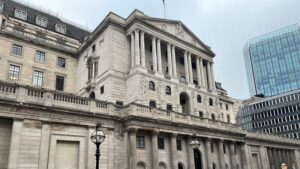Although not all oil price shocks historically led to recessions, all National Bureau of Economic Research recessions are associated with an increase in the price of oil. Oil prices have spiked at the onset of each of them, and the average real crude price during recessions has been 42% higher than in normal times.
Clearly, an exogenous oil price shock is rarely good news for oil-importing economies: increased prices act as a tax on consumers, create “bad” inflation (i.e. not related to a healthier economy) and slow growth.
And the current economic climate makes increased investor vigilance with respect to a potential oil shock particularly justified. With US households drowning in debt and savings rates very low, we cannot expect the private sector to maintain the same level of real spending should energy prices rise significantly (although all-time low gas prices could partly offset this). On the corporate side, higher oil prices would squeeze demand, raise input prices, weigh on margins – and are typically associated with widening credit spreads. Thus, access to liquidity would be further restrained in already tight credit conditions.
So, are investors’ fears of an oil shock reasonable?
Iran’s refusal to give up its nuclear ambitions, and the resulting EU embargo and US sanctions could lead the country to respond by shutting the Strait of Hormuz, which hosts approximately one-third of the global trade in oil. However, fears are probably overdone.
First, the US has the military resources to unblock it, probably within two weeks.
Second, this would also penalise China, and Iran cannot afford to lose one of its biggest customers.
Third, US strategic reserves and Saudi Arabia’s spare capacity are sufficient to make up for the potential shortfall.
On the latter point, US strategic petroleum reserves have increased by 1,412% in 32 years and the number of consumption days they can cover from 2.5 in 1978 to almost 37, making the US much less dependent on imported oil in the event of a temporary supply disruption. In addition, most OPEC nations have developed spare capacity in order to align production with their perception of supply and demand. Estimates of Saudi Arabia’s spare capacity stand at around 2.5 million barrels per day while Iran’s production level is about 4.3 million.
Downside risks still present
Therefore, Saudi’s spare capacity can cover close to 60% of the shortfall should all of Iran’s production disappear from the market. Adding the release of some of the US’s 704.7 million barrels of strategic reserves, and the possibility that other OPEC members might raise production, we feel that solutions can be implemented sufficiently fast to avoid long-lasting effects on global prices.
While fears of surging oil prices are probably overdone, risks to the downside are more than likely being underestimated. In 2012, the structural effect of waves of deleveraging worldwide should be much more persistent and predominant in the oil price trend.
All told, we expect crude oil prices to remain volatile, with risks of short-lived spikes within structural medium-to-longer term downward pressures. Oil prices should also remain above a certain threshold (around $ 100/barrel) to meet OPEC’s members’ financing needs as they put in place social programs to contain unrest in the MENA region.







